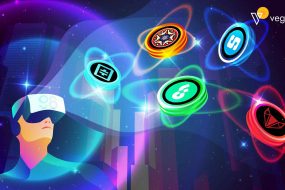
The phenomenon of cryptocurrencies and blockchain technology has captured the interest and imagination of people worldwide in recent years. With new cryptocurrencies emerging constantly, keeping up with the rapidly evolving landscape can take time and effort. One cryptocurrency that has gained significant attention is LUNC, the native token of the Terra blockchain. But what exactly is LUNC, and what purpose does it serve? This article will provide an in-depth look at LUNC to help explain what it is and what its role is within the Terra ecosystem.
A Brief History of Terra and LUNC
To understand LUNC, it’s helpful to first look at the history and origins of the Terra blockchain project. Terra was launched in January 2018 to build decentralized applications focused on payments and financial services. The project’s native currency was initially named Terra, but it was later rebranded to Luna to avoid confusion with the overall Terra blockchain platform.
Luna operated alongside Terra USD (UST), an algorithmically managed stablecoin that maintained its 1:1 peg to the US dollar. The two tokens were inextricably linked, with Luna being “burned” and new UST tokens created to stabilize UST’s dollar peg. This process allowed Terra to offer fast, cheap transactions without the volatility of other cryptocurrencies.
By 2022, Terra had rapidly grown to become one of the world’s most significant blockchain-based payments and currency systems, with over $30 billion in total value locked. However, in May 2022, the Terra ecosystem collapsed due to instability in its tokenomics. A bank run on UST caused its dollar peg to break, leading Luna to lose its peg to the dollar.
In the aftermath, Terraform Labs proposed a hard fork reorganization of the Terra blockchain. This saw the original Luna token renamed to LUNC, while a new Luna token was created with the ticker LUNA. However, LUNC retained little to no value following the crash and fork.
LUNC Nutshell: Kernel of Knowledge
In summary, LUNC refers to the original Luna token impacted by the Terra blockchain collapse in May 2022. It represents the native cryptocurrency of the original, pre-fork Terra blockchain. Some key things to understand about LUNC include:
Ticker: LUNC (previously LUNA on the original Terra blockchain)
Purpose: Served as the primary currency for transactions and payments on the Terra network
Algorithm: Was algorithmically managed alongside UST to maintain price stability
Current value: Has very little value today after Terra collapse and hard fork
Issued: Over 18 billion LUNC remain in circulation post-fork
Blockchain: Runs on the original, post-fork Terra blockchain
Today, LUNC still exists but holds negligible value and functionality compared to its former role as the native token of one of the largest blockchain ecosystems. It is primarily traded on centralized exchanges with few use cases. The LUNA ticker and purpose were assumed by the new token created in Terra’s hard fork reorganization.
How Did LUNC Lose Its Value?
To understand why LUNC lost virtually all of its value, it’s essential to examine what caused the collapse of the Terra blockchain in May 2022. There are a few key factors that contributed to LUNC being worthless post-fork:
Loss of peg: The de-pegging of UST from the US dollar triggered a bank run that drained Terra’s reserves. This caused Luna to lose its dollar-pegging mechanism.
Loss of confidence: With UST failing and Luna de-pegged, confidence in Terra’s tokenomic model vanished. A lack of trust in the project’s viability tanked Luna’s price.
Fork reorganization: The hard fork saw Luna renamed to LUNC and a new LUNA token created. LUNC was left running on a blockchain with little development or community behind it.
No utility: Without its dollar-pegging role, LUNC no longer served any useful purpose on the old Terra blockchain. It became a stranded asset with negligible demand.
Zero redemption: There was no possibility or mechanism for LUNC holders to redeem their tokens for value following the collapse event and rigid fork.
LUNC was wholly decoupled from its core utility and algorithmic mechanisms through the collapse of the UST and Terra fork. It emerged as a defunct asset running on an abandoned blockchain with little hope of regaining value.
What Are People Saying About LUNC?
In the cryptocurrency community and financial media, there is widespread consensus that LUNC now represents a token with essentially zero value or potential. Here are a few perspectives shared about LUNC:
Given the circumstances surrounding its origins on the pre-fork Terra blockchain, most see it as a “dead coin” without a future.
Trading volumes are shallow, as only some see it as an investment worth holding. Most exchanges also delisted LUNC following the crash.
Attempts by proponents to resurrect LUNC’s price through social media pumping have failed mainly due to the need for a clear use case or development team behind the token.
Significant risks of holding LUNC are highlighted, such as the possibility of further declines to negligible worth as interest fades over time.
Advice commonly given is to avoid LUNC and not invest in hopes of a potential recovery, as faith in the project’s ability to regain utility is almost nonexistent.
In summary, mainstream sentiment paints a picture of LUNC as remaining an essentially worthless and stranded asset after the demise of its core use and support structure within the pre-fork Terra network.
To wrap up, LUNC refers to the original Luna cryptocurrency token that was impacted by the collapse of the Terra blockchain and stablecoin ecosystem in May 2022. It still exists but has no meaningful utility or value after being decoupled from its dollar-pegging role through the hard fork reorganization that created a new LUNA token.
Trading for negligible worth on a few remaining exchanges, LUNC is widely viewed within the industry as having no potential for recovery or use within blockchain-based payments and financial applications. It is an example of the risks tokens face, closely intertwined with a core blockchain network that lost confidence and viability.
For the average person interested in crypto, LUNC offers little to no opportunity but represents the potential downside of speculative investing in projects without meaningful protections for holders. Its fate highlights the critical importance of fundamental tokenomics analysis, team credibility, and macro factors when evaluating cryptocurrencies as potential investments.
Benefits of LUNC
Terra Classic, formerly known as Terra and now referred to as LUNC, is one of the more controversial cryptocurrencies in the market today. Once a top 10 cryptocurrency by market cap, Terra collapsed in May 2022 from an algorithmic stablecoin de-pegging event. However, despite this massive crash, LUNC still retains some value and utility that could potentially give it benefits in the future. Let’s explore some of the critical benefits of LUNC and why it may have a role to play in the cryptocurrency ecosystem, even after its de-pegging crisis.
LUNC has a Native Burn Mechanism
One key benefit of LUNC is that it has a native burn mechanism built into its code. A portion of all transaction fees on the Terra Classic blockchain are burned, permanently removing LUNC from circulation. This built-in deflationary pressure could support the price of LUNC over the long run.
When Terra collapsed, the circulating supply ballooned massively as UST de-pegged from the dollar. It went from having a relatively constrained circulation to tens of trillions of LUNC flooding the market. The massive supply increase was one major factor that drove the price down so precipitously.
However, with that ample supply comes more overall transaction volume and fees. A more significant percentage of each transaction is now being burned on an ongoing basis compared to when Terra was in its growth phase. As long as the Terra Classic blockchain processes transactions, LUNC’s supply will slowly but steadily reduce over time.
This burn mechanism gives LUNC a degree of fundamental price support that many other post-crash projects lack. It differentiates LUNC from projects where developers abandoned the protocol after a failure. As long as some basic activity level remains, LUNC’s supply will contract, which could boost its price valuation in the years ahead.
Potential Role as Payment Token
Another potential long-term benefit of LUNC is that it could carve out a niche role as a payment token, similar to how some stablecoins are used. LUNC’s price is no longer pegged to market demand and supply/demand dynamics post-collapse. However, it still retains a use case as a medium of exchange within the Terra ecosystem.
Despite the crash, many companies, projects, and DApps remain active on Terra Classic. Examples include MoonPay (cryptocurrency payment processor), Everpedia (peer-reviewed encyclopedia), and IQ Cash (Play-to-Earn gaming). For these projects, LUNC is still the native currency used to pay for goods, services, and in-game items/upgrades.
If economic activity and TVL gradually return to Terra Classic, LUNC could see increasing use as a payment currency within this ecosystem. Projects may choose to quote prices and accept LUNC due to its pre-existing brand recognition and network effects relative to lesser-known alternatives. Merchants could also opt to price items in LUNC as activity rises.
This gives LUNC a functional use and utility even after its failed experiment with algorithmic stability. Being used widely for actual transactions is essential for any currency/token, and payment usage would be a critical long-term benefit for LUNC, in particular post-collapse.
Potential Store of Value
Another potential long-term benefit for LUNC is that it could evolve into a form of digital store of value. Despite the crash, LUNC retains the same basic scarcity and security properties as most other top cryptocurrencies. It has a fixed total supply of coins that can only be obtained through mining, and its blockchain remains decentralized and secured by proof of work mining.
But what gives LUNC potential store of value characteristics post-collapse is the massive burn reduction that is now underway. As mentioned previously, LUNC’s supply is shrinking far more rapidly now than it ever was pre-crash. This ongoing supply contraction makes each LUNC coin increasingly more scarce over time.
If economic activity and demand pick up again on Terra Classic gradually, the asset could be bid up in price simply due to its long-term supply dynamics. Assuming usage and utility remain, in 5-10 years, there will be far fewer LUNCs in existence than today due to continued burning. This makes each coin more valuable from a hard asset, scarcity perspective.
The finite supply issuance gives LUNC portability benefits compared to fiat, which can be devalued by central bank policies. Being deflationary through built-in burn mechanics enhances its potential store-of-value role. If demand returns, LUNC’s fixed supply gives it a shot at regaining value as a long-term hold over several years.
Development Continuing
Another potential long-term benefit for LUNC is that core development is ongoing despite the crash. The Terra Classic team continues to work on making improvements, running nodes, and testing upgrades even now. Examples of ongoing development include:
Hard Fork: A mainnet hard fork was implemented in June 2022 to bring technical changes, including a Community Pool proposal. This shows the blockchain is still being actively maintained.
Enhancements: Work is reportedly continuing on enhancements like IBC integration and blockchain maintenance and preparing for potential future upgrades.
Compatibility: Efforts to maintain compatibility with Ethereum Virtual Machine (EVM) allow LUNC to potentially tap into existing Ethereum tools, services, and developer talent pool.
As long as core development work persists, it gives LUNC a chance to remain relevant and competitive in the long run. Planned upgrades could help LUNC gain new features, fix problems, and integrate with other blockchain ecosystems over the coming years. This distinguishes it from projects where teams disappeared post-failure. Ongoing work improves LUNC’s long-term viability prospects.
Speculation Potential
Another long-term benefit of LUNC is that it may retain intense speculation and volatility potential due to its controversial past. The Terra collapse was one of the most widely discussed crypto events of 2022 so far, garnering enormous attention globally. As a result, LUNC is still well known within crypto circles.
Its speculative appeal comes from the hope that some comeback may be possible in the years ahead if specific catalysts emerge. Even without a recovery, LUNC could still see dramatic short-term price swings based on news, rumors, or market sentiment changes related to its future potential. This makes it attractive for traders seeking volatility plays.
Significant announcements regarding LUNC’s development roadmap, exchange listings, new partnerships, or usage growth likely spark significant short-term price surges. , the prospect of any positive Terra-related updates keeps speculative interest alive to some degree. This trait gives investors higher risk/reward opportunities with LUNC compared to slower-moving assets.
Along with ongoing development work, LUNC’s controversial past enhances its long-shot speculation potential. As long as the Terra story remains well known, LUNC seems poised to capture speculative interest from risk-tolerant investors who thrive on high-volatility plays. This could drive meaningful short-term price rallies even without a full-scale revival.
Community & Brand Recognition
Another long-term benefit for LUNC is the community support and brand recognition despite the crash. Several dedicated crypto communities remain loyal to LUNC and the original vision of the Terra project. They provide support through channels like Reddit, Telegram and Twitter.
This passionate community gives LUNC a real advantage over projects that have yet to gain a following. Famous names and established brands are essential in crypto, and Terra was once a top 10 project by users and market cap. Even now, millions are familiar with LUNC due simply to its past success and failure making headlines.
If economic activity picks up again, this existing community provides a ready audience and potential new users to gain traction. They give moral support to developers working on improvements. During speculative surges, communities fuel more incredible momentum, interest, and new investors with their discussions.
Strong brands are challenging to build from scratch, so LUNC benefits immensely from the pre-existing Terra following and notoriety. Communities provide significant network effects that can drive future growth spurts. Their ongoing backing helps LUNC retain long-shot potential where many other crashed projects found no post-failure support.
Use in Gaming & Metaverse
While LUNC’s value as a stablecoin collapsed, it may still find new utility as a currency within gaming and virtual economies. Several play-to-earn (P2E) games have already integrated LUNC due to its prior popularity and liquidity. New P2E games that feature LUNC as the primary in-game token could emerge.
LUNC may also gain usage in the burgeoning metaverse space as a currency for virtual land/property transactions, peer-to-peer payments, and more. Second Life, Decentraland, and Sandbox currently utilize their project-specific tokens for in-world economies. But interoperable metaverses could plug into and draw demand from existing crypto userbases like LUNC’s.
Gaming/metaverse implementations broaden LUNC’s potential utility and give it avenues for organic usage growth independent of a comeback as a stablecoin. Play-to-earn models especially, are well suited to establishing demand for virtual assets through rewards. This expands LUNC’s relevance into new high-growth use cases moving forward.
Exchange Listings & Liquidity
Perhaps counterintuitively, given its troubled past, LUNC remains listed and tradeable on most major centralized crypto exchanges. Examples include Binance, KuCoin, OKX, Gate.io, Crypto.com and more. This easy access to trading
Conclusion
LUNC is the native token left behind from the original Terra blockchain following its collapse in May 2022. While it still exists on its original blockchain, LUNC now holds negligible value and functionality due to being completely decoupled from its core dollar-pegging role and lack of development post-fork. Within the cryptocurrency community, LUNC is widely seen as a “dead coin” without prospects for recovery or regaining utility. Its origins and current state serve as an example of the risks faced by tokens too closely intertwined with networks that lose viability and confidence. For average investors, LUNC provides a lesson in evaluating the credibility and sustainability of any project’s economic model before taking a speculative position. While cryptocurrency and blockchain technology offer fascinating opportunities, caution is advised when backing tokens without meaningful protections or development prospects in case of unforeseen failures within their native networks.











